Physical Address
304 North Cardinal St.
Dorchester Center, MA 02124
Granulomas are discrete collections of histiocytes with or without multinucleate giant cells. Histiocytes are bone marrow derived or mesenchymal. In granulomas, their cytoplasmic membranes touch with no intervening connective tissue. Infectious etiologies, especially fungal and mycobacterial, should be excluded with special stains in any granulomatous process without obvious etiology. Examination under polarized light is required to exclude birefringent foreign material.
Granulomas can be categorized into sarcoidal, tuberculoid, palisading, and suppurative. Sarcoidal granulomas, composed of epithelioid histiocytes, are “naked” granulomas with a paucity of surrounding infiltrate. Tuberculoid granulomas are associated with a peripheral mononuclear infiltrate and may show central caseous necrosis. Palisading granulomas surround devitalized collagen (necrobiosis), mucin, or foreign material. Suppurative granulomas have a central collection of neutrophils (stellate abscess).
Granuloma annulare typically involves the upper- to mid-reticular dermis. The mucin in palisading lesions is usually apparent with routine staining as faint feathery blue material; however, colloidal iron or other mucin stains can be used for confirmation. Sparse multinucleate histiocytes are typically identified, and eosinophils occur in approximately half of cases. Rarely, perforation of the process through the epidermis (transepidermal elimination) occurs.
The subcutaneous tissue can be involved. Subcutaneous or deep granuloma annulare typically consists of histiocytes palisading around fibrin rather than mucin. It may be indistinguishable from rheumatoid nodule, resulting in its designation as pseudorheumatoid nodule. This subtype of granuloma annulare typically occurs on the lower legs, hands, head, and buttock in young individuals without rheumatoid disease.
The microscopic differential diagnosis of granuloma annulare and other palisading granulomas includes epithelioid sarcoma. Clues to this malignant neoplasm include necrosis and mild cytologic atypia. Epithelioid sarcoma demonstrates a biphasic pattern with transition between epithelioid and spindle cells. Cells stain for both keratin and vimentin.
Table 10.1 shows distinctions between granuloma annulare and necrobiosis lipoidica.
| Feature | Granuloma annulare | Necrobiosis lipoidica |
|---|---|---|
| Distribution | Focal and patchy | Diffuse and full thickness |
| Granuloma | Palisaded or interstitial | Horizontal tiers (layers) |
| Mucin | Yes | No |
| Shape of punch biopsy | Tapered | Rectangular |
| Plasma cells | Rare | Common |
| Cholesterol clefts | No | Occasional |
The microscopic differential for a “busy dermis” includes (see Appendix 1 ):
Blue nevus
Dermatofibroma
Dermal Spitz nevus
Metastatic breast carcinoma
Kaposi sarcoma (patch stage)
Granuloma annulare
Scleromyxedema
Neurofibroma
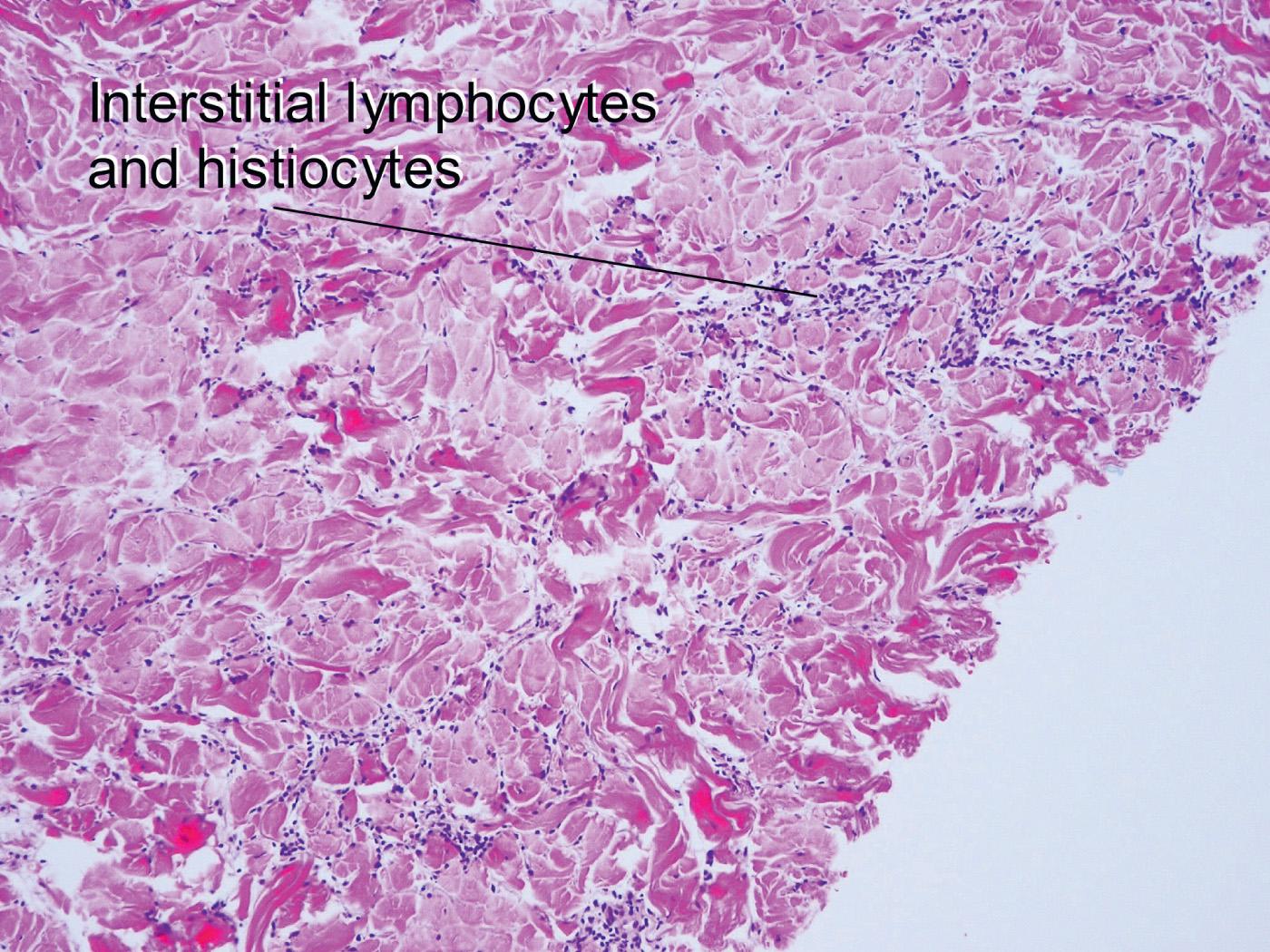
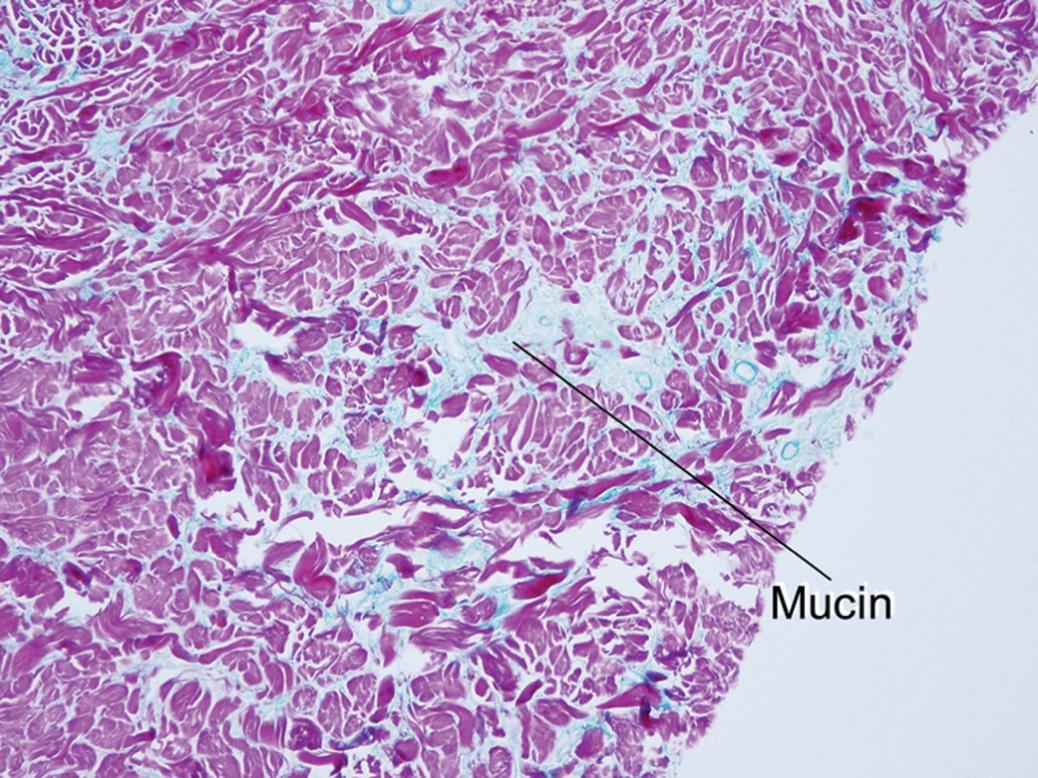
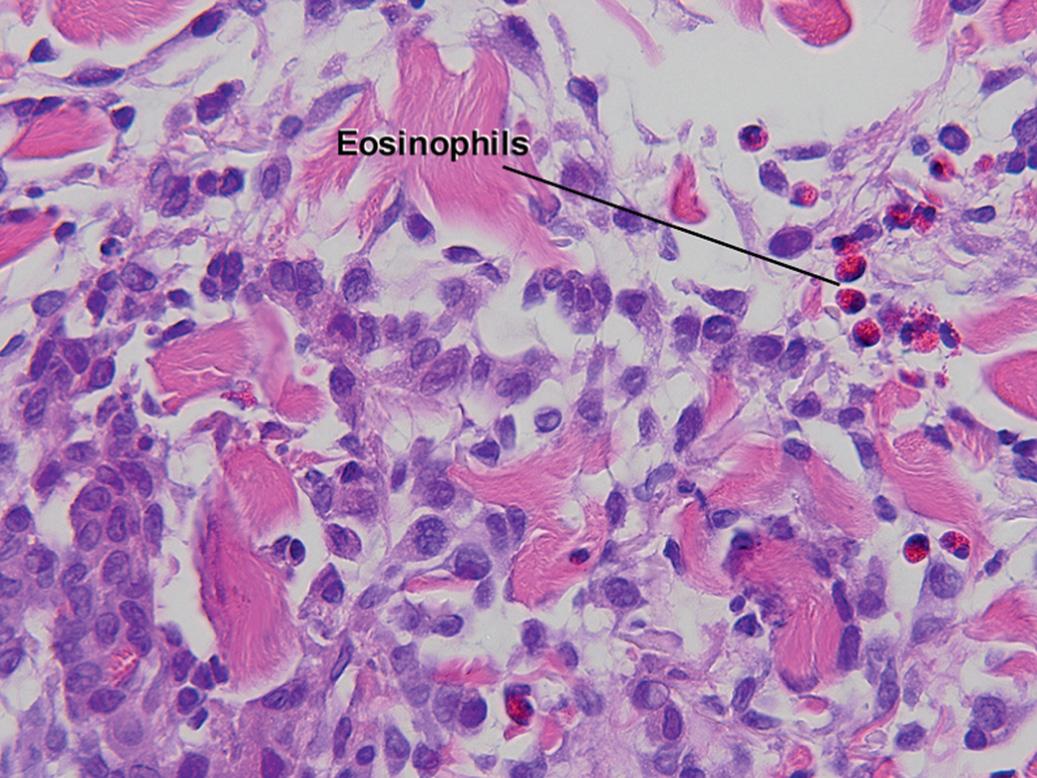
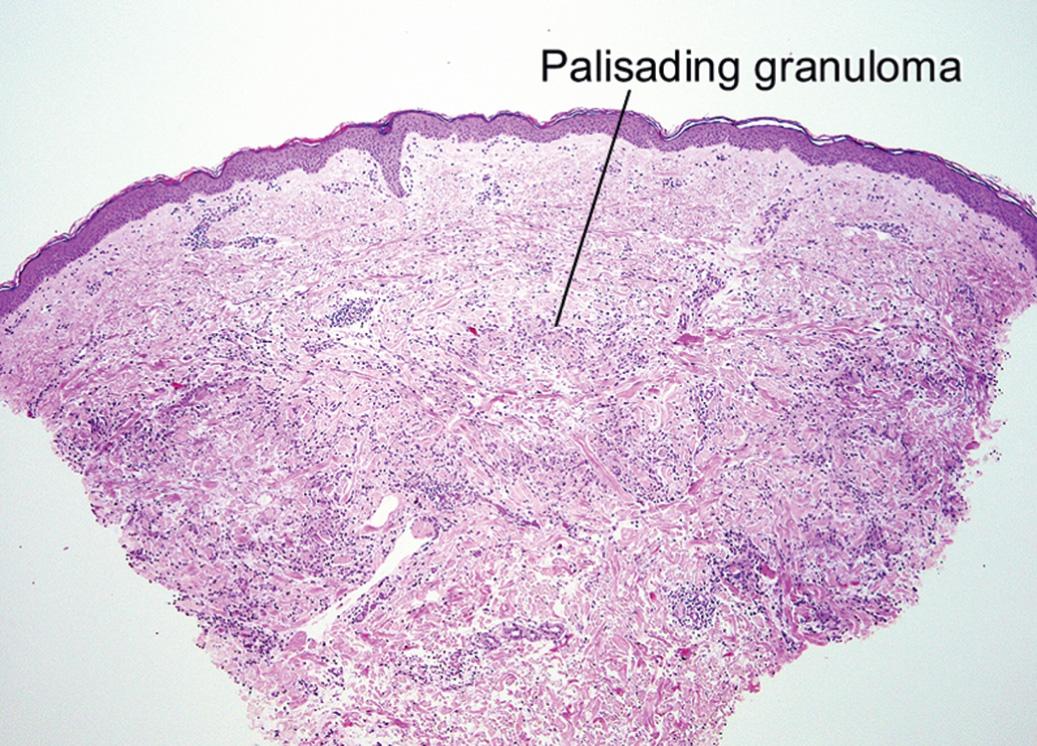
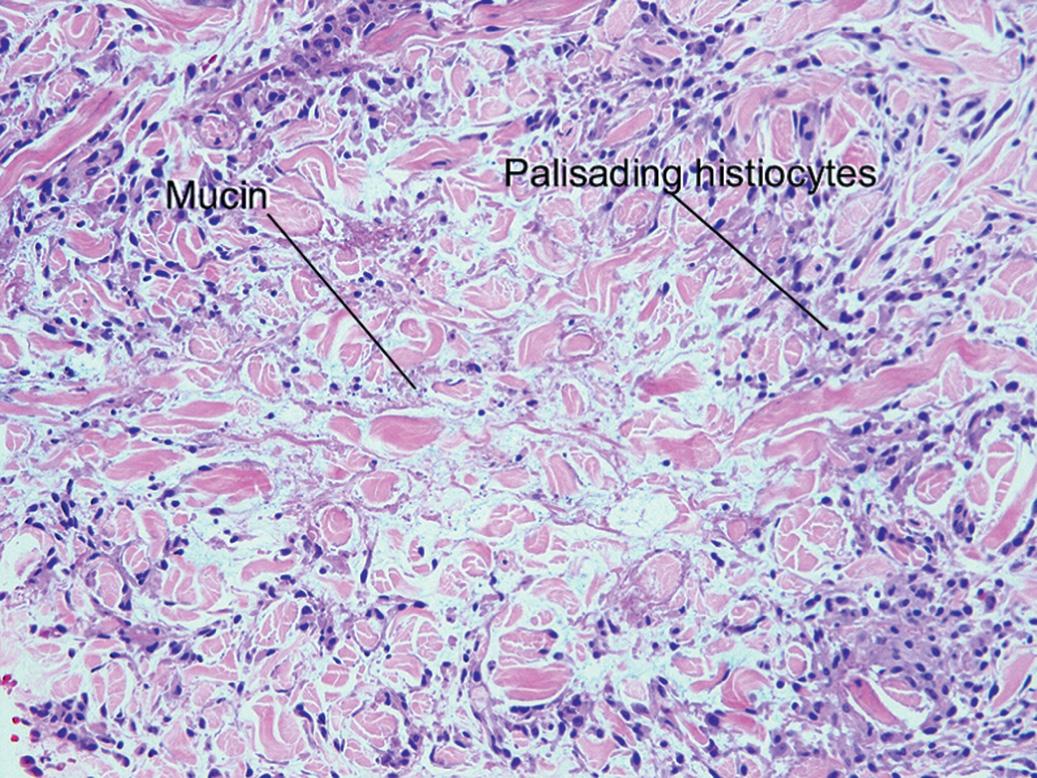
Solar elastosis
Similar palisade to granuloma annulare but no mucin
Elastic fibers are engulfed by palisading giant cells and histiocytes (elastolysis)
Central loss of elastic tissue
These lesions occur on areas of chronic sun damage such as the face, neck, hands, and arms. They have a raised border and an atrophic, finely wrinkled center. The granulomas consume actinically damaged elastic tissue. Other names have included Miescher facial granuloma, atypical necrobiosis lipoidica of the face and scalp, and annular elastolytic giant cell granuloma. Some consider it to be a variant of granuloma annulare on sun-damaged skin. The central loss of elastic tissue, absence of mucin, and conspicuous multinucleated histiocytes are the primary basis for distinguishing these lesions.
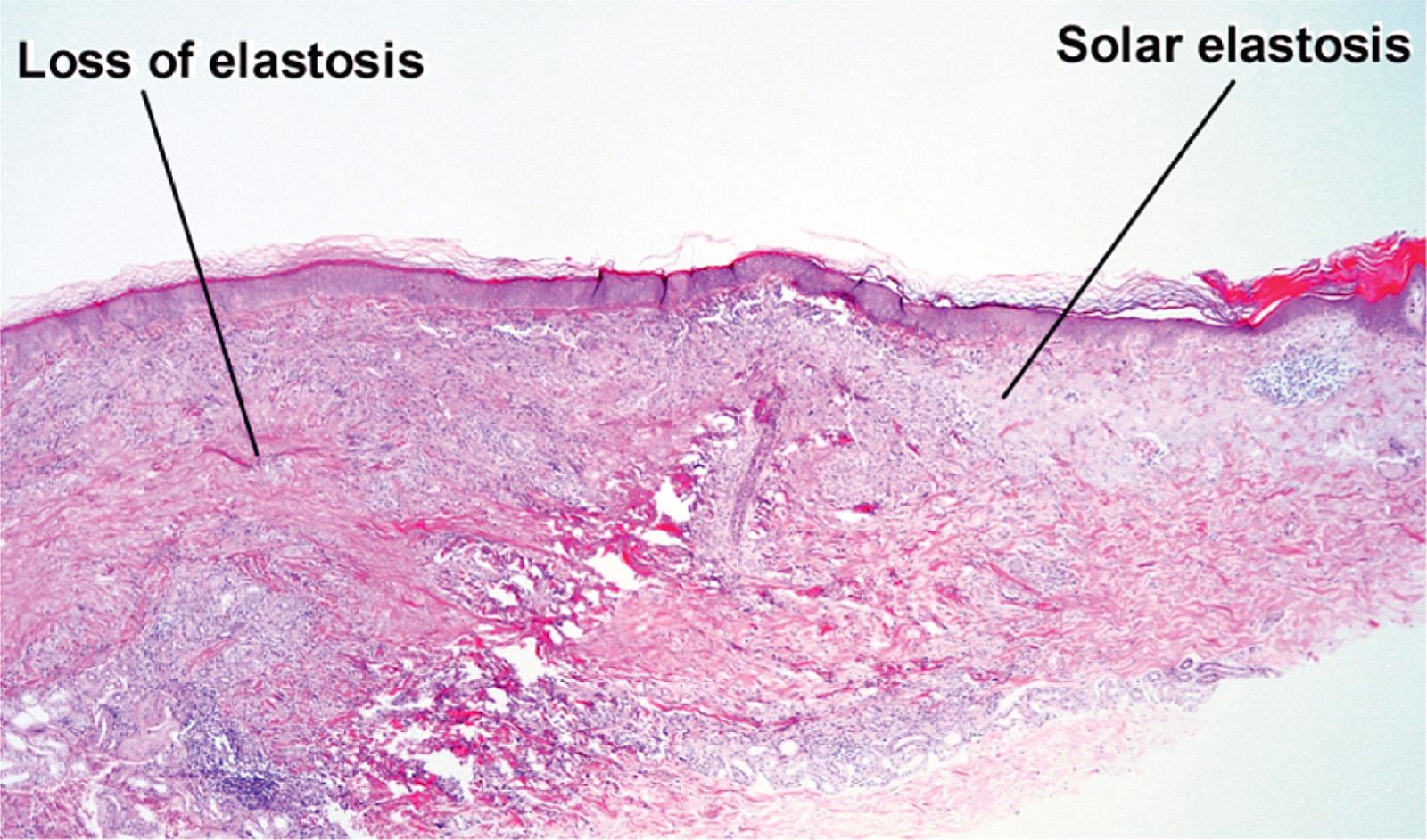
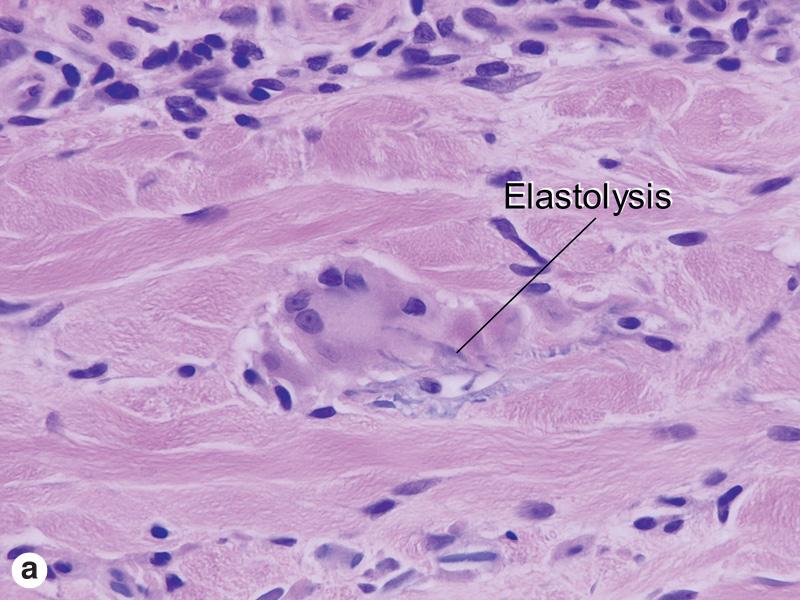
Horizontal, acellular, pale, degenerated collagen between layers of granuloma
Top-to-bottom and side-to-side involvement
Plasma cells common in the deep dermis
No mucin
Rectangular punch due to sclerosis
May see cholesterol clefts or lymphoid nodules
Very early lesions can resemble interstitial granuloma annulare
A large proportion of patients with necrobiosis lipoidica have diabetes, thus the original name necrobiosis lipoidica diabeticorum. However, fewer than 1% of patients with diabetes have necrobiosis lipoidica. The pretibial area is the most common site, but other areas of the lower extremities, arms, hands, and trunk can rarely be involved.
Necrobiosis lipoidica is considered a palisading granulomatous dermatitis. The palisade is horizontally arranged in tiers like the layers of lasagna. The full thickness of the dermis and often the subcutis is involved.
The term necrobiosis refers to alteration of dermal connective tissue with loss of definition, pale staining, and absence of nuclei.
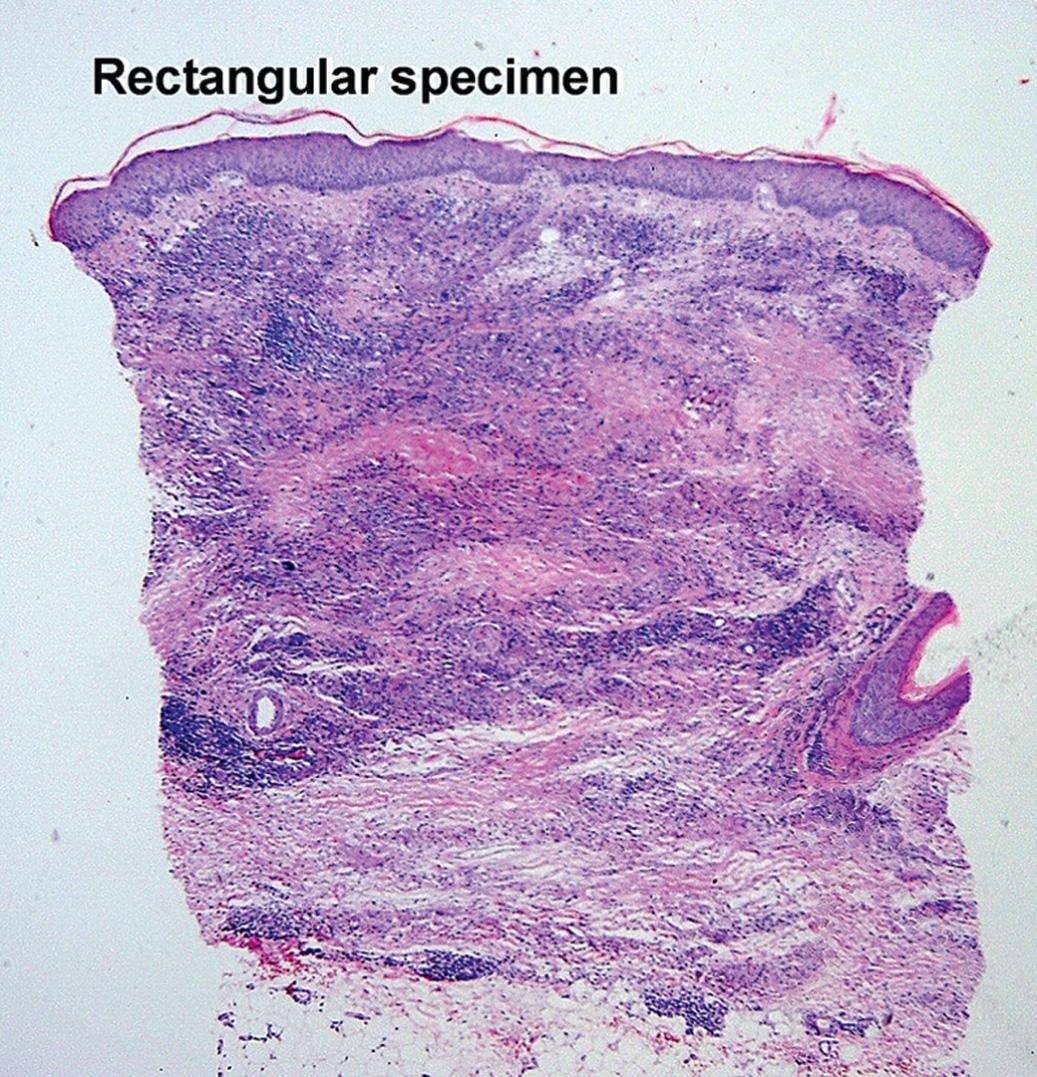
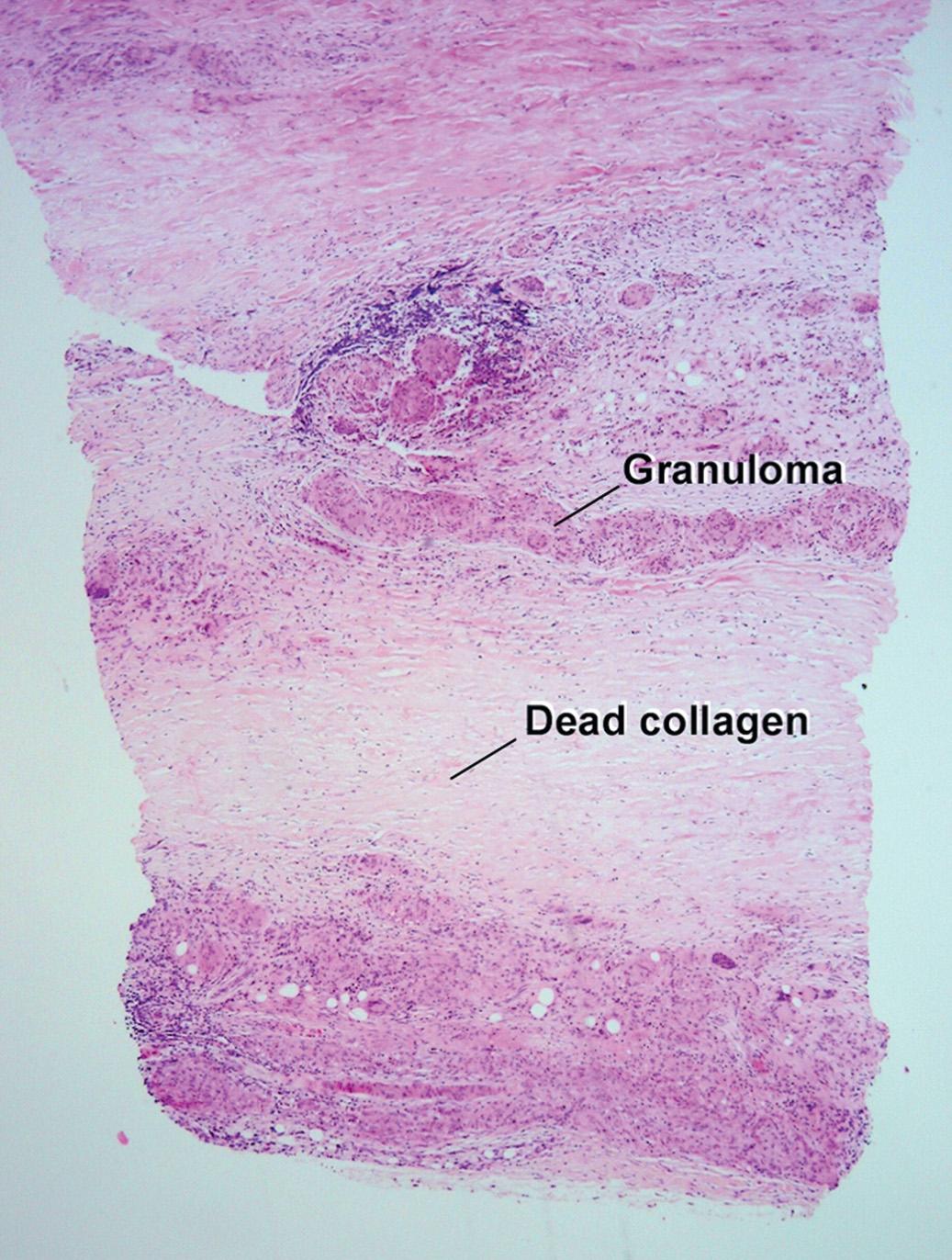
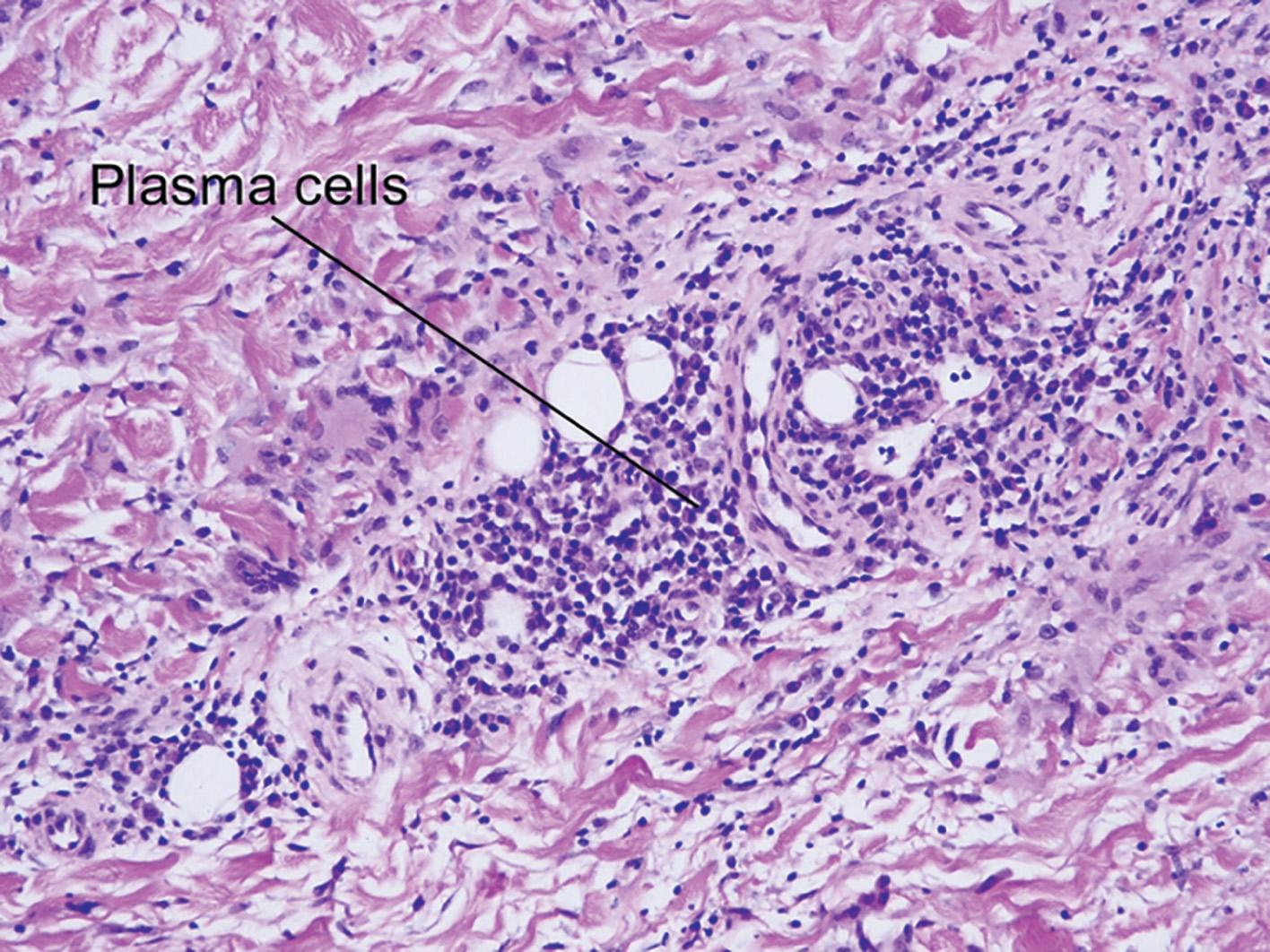
Large palisading granuloma surrounding deeply staining eosinophilic fibrin
Deep dermis and subcutis
No mucin
The histology mimics subcutaneous granuloma annulare and rheumatic fever nodules. Rarely similar nodules occur in systemic lupus erythematosus.
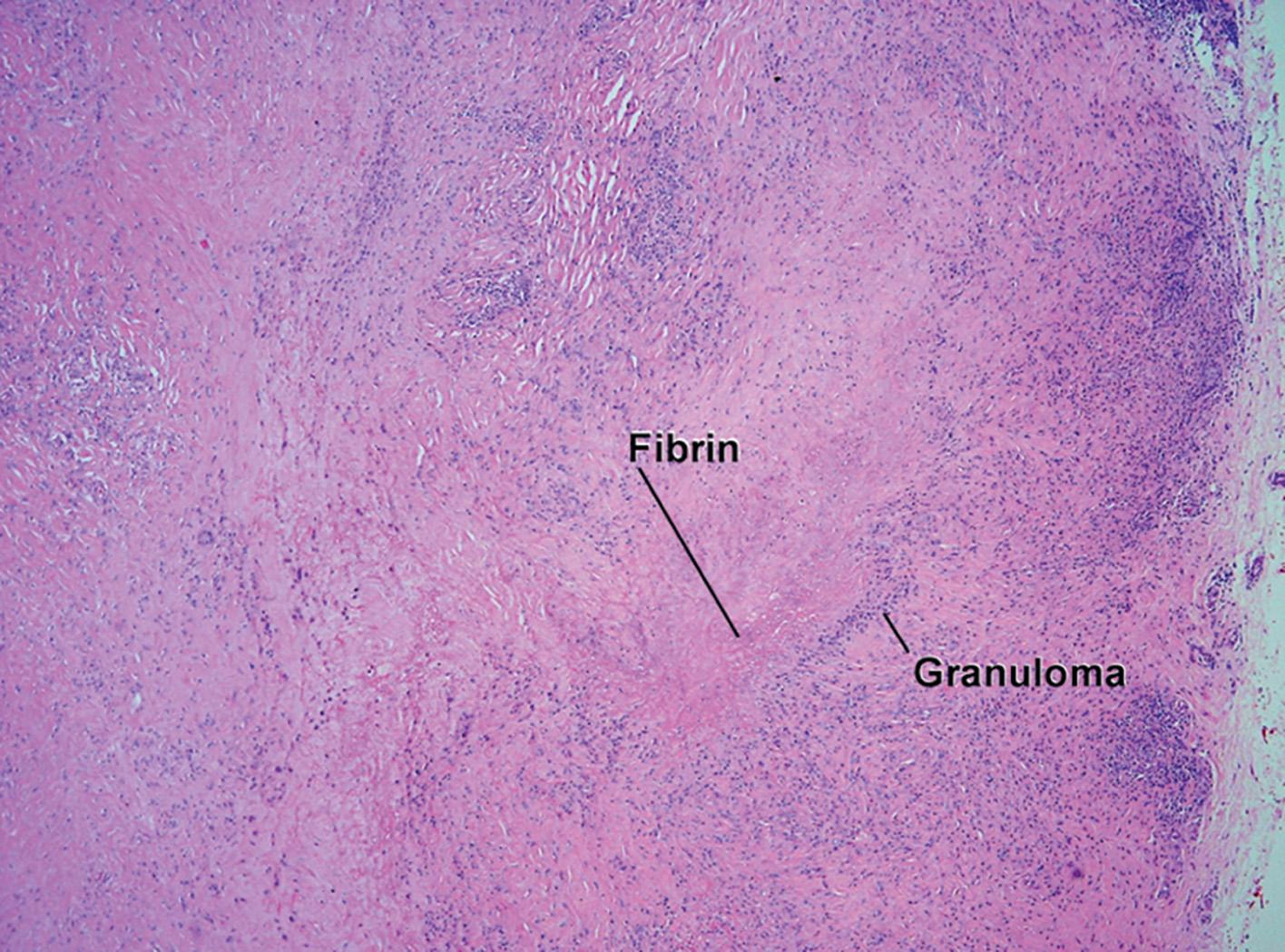
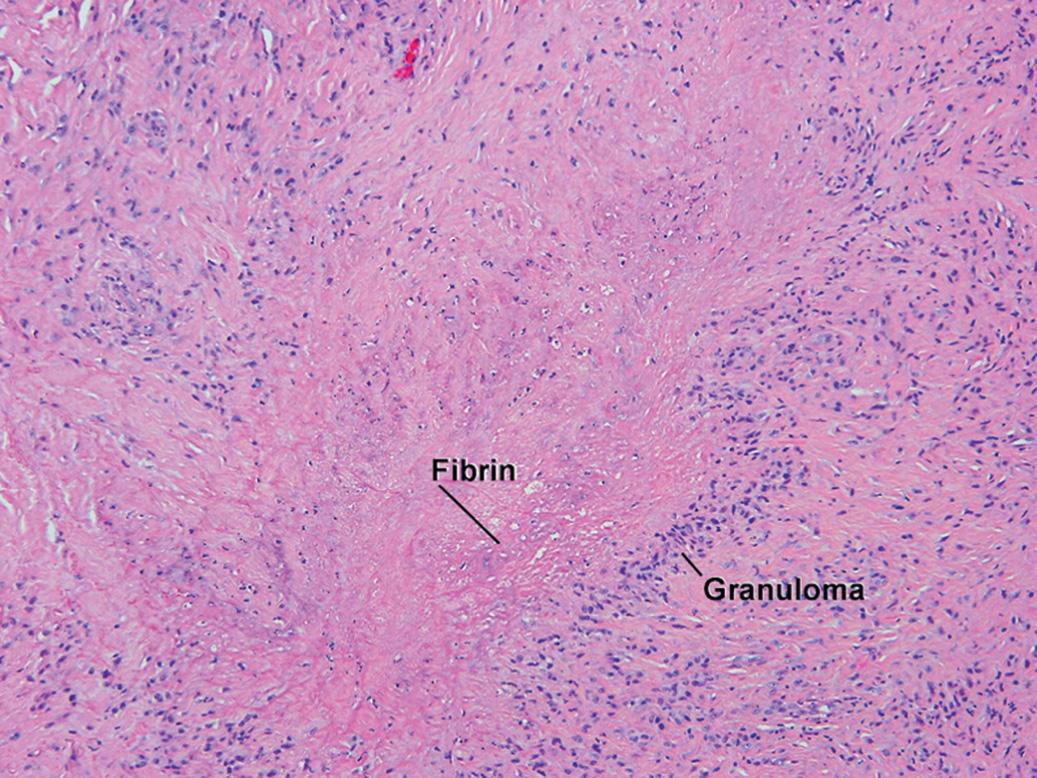
Become a Clinical Tree membership for Full access and enjoy Unlimited articles
If you are a member. Log in here